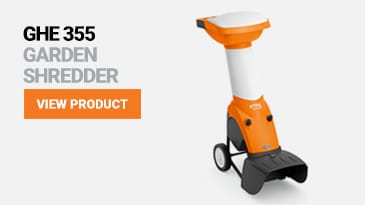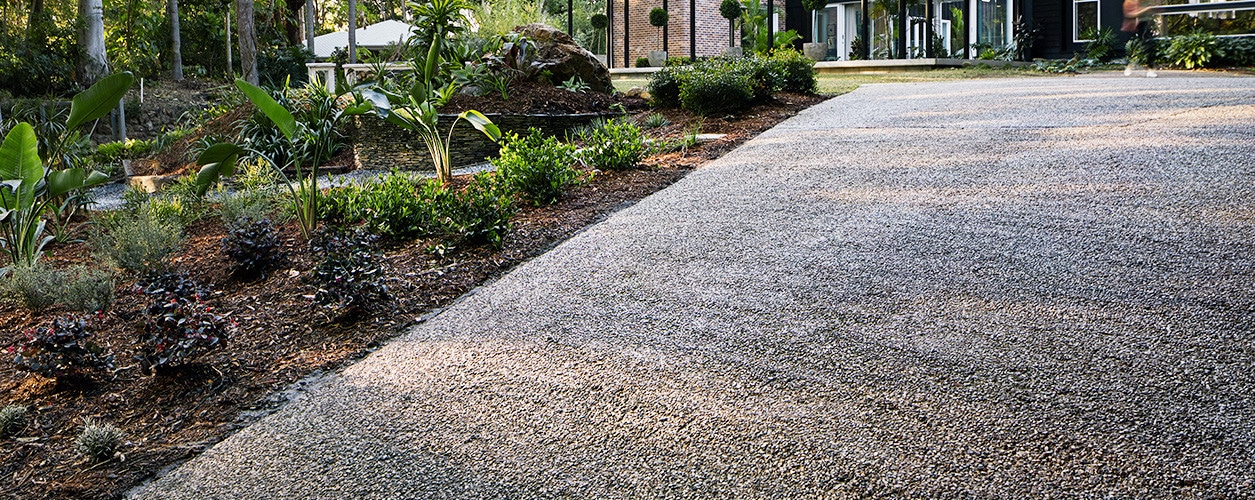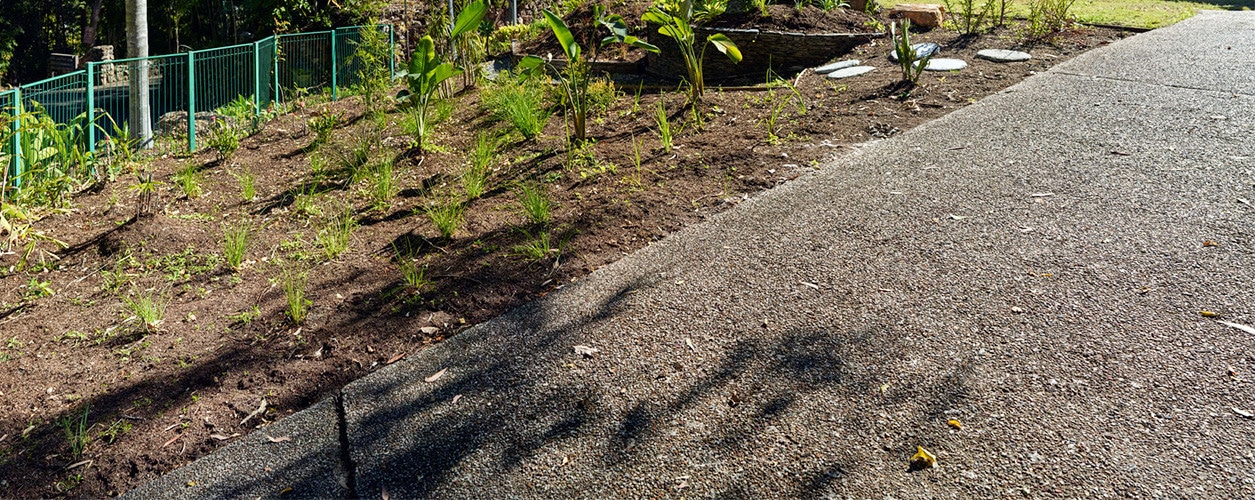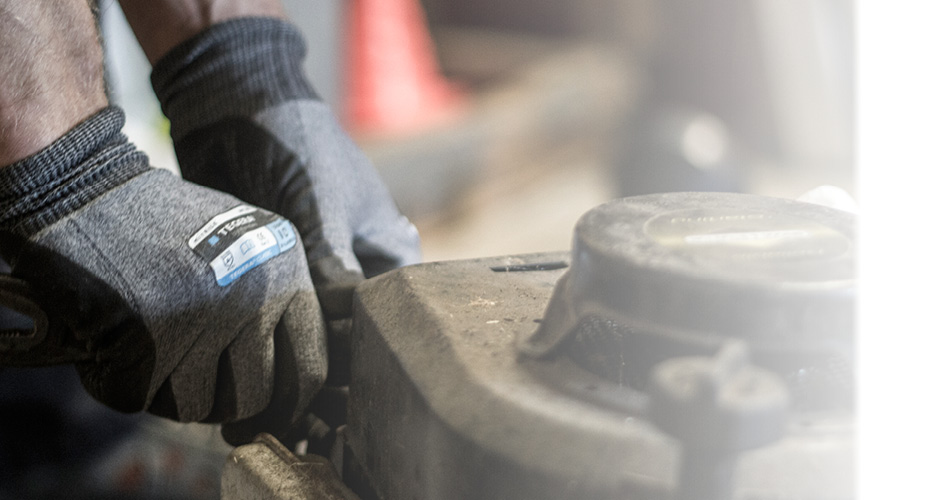Week 6
Pressure Cleaning, Hard Surface Facelift and Shredding Garden Waste
Once you have finished the work on your garden beds, lawns, hedges, pots and topiaries, give the hard surfaces in your garden a good clean. Mud, soil, grass stains, footprints and leaf litter stains (maybe even red wine!) will need to be cleaned off your pavers and pathways. Your deck will also need to be pressure cleaned and re-oiled.
Follow these steps for an immaculate outdoor area you can be proud of:
STEP 1: REMOVE LEAF LITTER & DEBRIS
The first step is to get rid of leaf litter and loose debris from your deck, driveway, pathways and veranda. Use a hand-held blower for these areas and blow all the garden litter onto your lawn. You can leave this for the lawn mower to collect when you mow the grass next. If you have a huge build up of excess leaf litter in a garden bed, you could use a blower to gently remove this debris from the garden and add it to the compost.
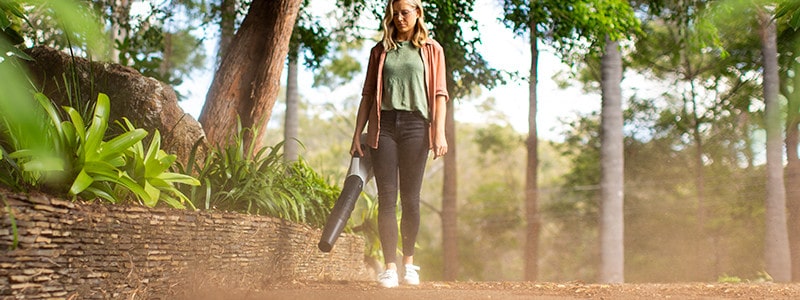
If you are working with a large outdoor area, a back-pack blower is a very efficient way to gather up the mess. These blowers sit nicely over your shoulders and are perfect to clean up tennis courts, large driveways, or even lawn areas that don’t need a mow.
STEP 2: HIGH PREASSURE CLEAN
The high-pressure cleaner is a great tool for all your paved and concrete surfaces and brings them back to new, removing traffic marks and stains. Eucalyptus leaves will often leave oil stains – especially on lighter coloured pavers and cement, a pressure cleaner will lift these marks. Once connected to a hose and power source, move the wand over the hard surfaces to reveal the original colour and texture. Give it all a hose down on completion, spraying any dirt splash off on walls or pots that are nearby.
Natural stone such as bluestone and sandstone also benefit from a pressure clean once a year and by doing this, you will see the original markings of the stone. Clean away the dirt and mud build-up to reveal the original yellows, whites and oranges of the sandstone and the darker tones in the bluestone. You can also use the high-pressure cleaner on slate or stack-stone. Ensure you wear eye and ear protection while doing this – gumboots are also very handy!
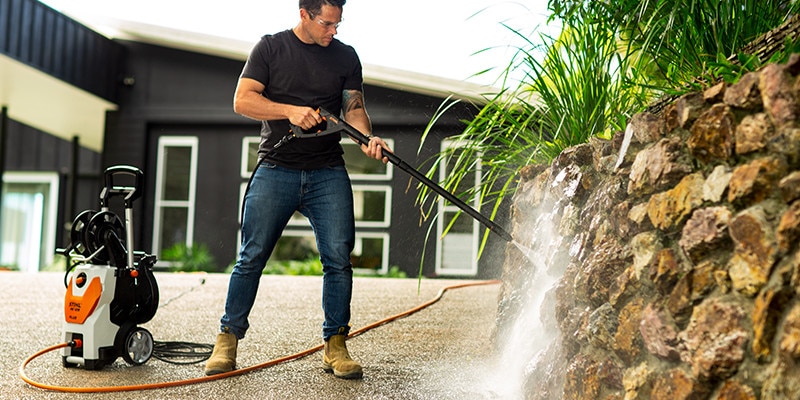
Painted and rendered brick walls may attract algae and moss through the coolers months, or general markings from wear and tear. Give them a clean and have them looking slick again to lift the look of your outdoor space and bring back the solid colour-blocking that they were designed to do. A freshly cleaned rendered wall contrasts beautifully to a healthy green lawn or garden bed.
STEP 3: CLEAN THE DECK
Decks too will age over the years and wear and tear will start to show. Use the patio and deck cleaner attachment for your STIHL high-pressure cleaner to run over the timber and expose the beautiful markings within the wood. It’s a great idea to oil your deck annually to protect it against the sun, rain and everyday abraisions using a product appropriate to the timber you have. A freshly cleaned and oiled deck can transform an outdoor space. Ceramic pots and water features will also benefit from a pressure clean.
STEP 4: GARDEN WASTE SHRED
The garden waste that you have accumulated from all the completed works in your yard will certainly build up over time. You will end up with a collection of palm fronds and seed pods, tree branches, hedge and shrub cuttings, plus the never-ending lawn clippings! Use the garden shredder to break down the branches, palm fronds and green waste, then add them to your lawn clippings to go into the compost. Once the compost has had enough time to age and breakdown, this can be cultivated and spread through your garden beds to feed your plants.




